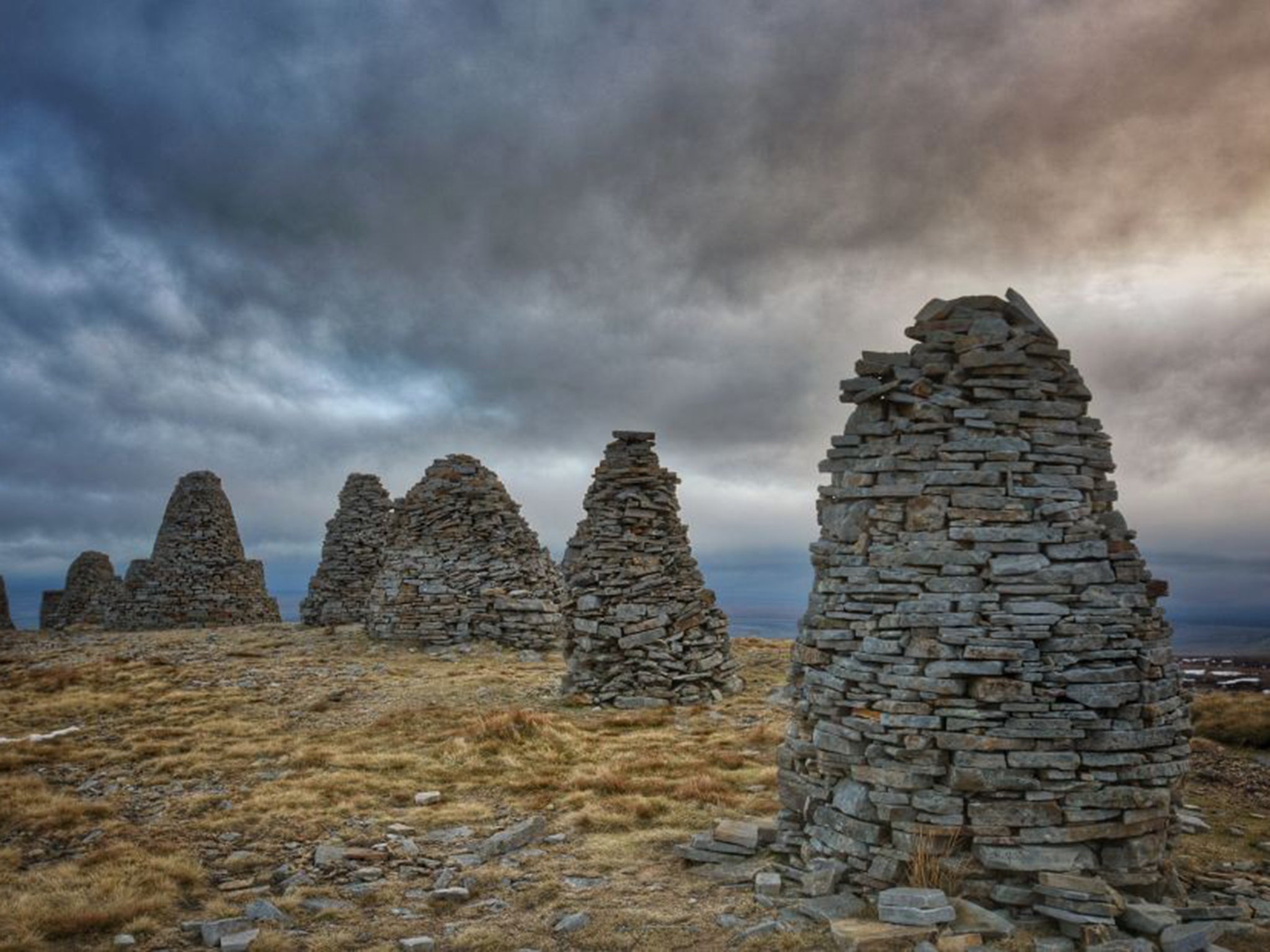Alfred Wainwright's famous coast-to-coast walking route across northern England fells in vital need of repair
Concerns that some of those following in Wainwright’s footsteps have begun falling waist-deep into bogs

When the legendary guidebook writer Alfred Wainwright created his now-famous coast-to-coast walk across the fells of northern England in 1973, he recommended that hikers end their trek by dipping their booted feet in the North Sea.
More than 40 years later, the 192-mile route has been tramped across by so many pairs of boots that it is now in vital need of repair – amid concerns that some of those following in Wainwright’s footsteps have begun falling waist-deep into bogs.
Conservation groups are now set to launch a “crowd-funding” campaign in a bid to prevent what has become one of the country’s best-loved hiking routes from becoming unsafe for the thousands of people who walk it each year.
The campaign has won the backing of television presenter Julia Bradbury, who walked the route for a BBC series. She said hikers would support the “wonderful walk” in any way they could.
“This type of fund-raising tends to bring together like-minded people and fellow travellers who are lovers of our great British countryside,” she said.
Wainwright’s original route, which takes in some of the North’s finest scenery and is designed to be tackled in 12 stages, has been revised several times in recent years. Parts of it have been badly hit by erosion.
One of the worst areas of the trail is at Nine Standards Rigg, a fell top between Cumbria and North Yorkshire. The ground has become so boggy that mountain rescue teams have been called out to free walkers who have become stuck up to their waists in boggy peat.
Amanda Owen, a shepherdess and star of ITV’s The Dales, whose farm at Ravenseat sits at the end of the first leg of the walk, said: “It’s important on so many levels that we keep this path in good shape.”
The North Pennines Area of Outstanding Natural Beauty Partnership plans to lay stone flags along a section of the route that will “float” above the damaged peat and give walkers a stable footing.
It is working with the Friends of the North Pennines and the Yorkshire Dales National Park Authority to “crowd-source” the funding by appealing directly to walkers and members of the public.
The funding campaign will be launched on 21 March. When enough funds are raised, helicopters will be used to fly stone flags to remote hillsides and lay a new path, while volunteers work to restore the damaged peat.
Peter Samson, chairman of trustees for the Friends of the North Pennines, said: “This is such an iconic part of a well-loved long-distance path and we’re delighted to be partners in this project. This is an opportunity to help conserve a unique beauty spot for future generations and I would urge everyone to lend a hand.”
Alistair Lockett, field officer for the partnership, said: “By repairing this stretch of the walk, we are doing two jobs at once. The ground is rapidly deteriorating as the route becomes more popular. With these repairs, walkers and the environment will feel the benefit for years to come.”
Generations of hill walkers have been inspired by Wainwright, best known for his Pictorial Guides to the Lakeland Fells. The beautifully hand-drawn books, written between 1952 to 1966, have become essential reading for anyone planning a walking trip in the region.
Wainwright was also the creator of the 192-mile coast-to-coast walk from St Bees in Cumbria to Robin Hood’s Bay in Yorkshire, which has become one of the most popular long-distance walks in the country since he penned a guidebook for the route in 1973.
In 2004, the walk was named the second best walk in the world by experts.
Wainwright, who was awarded an MBE for his writings, died in 1991 and his ashes were scattered on the summit of Haystacks, his favourite Lakeland fell.
Subscribe to Independent Premium to bookmark this article
Want to bookmark your favourite articles and stories to read or reference later? Start your Independent Premium subscription today.

Join our commenting forum
Join thought-provoking conversations, follow other Independent readers and see their replies